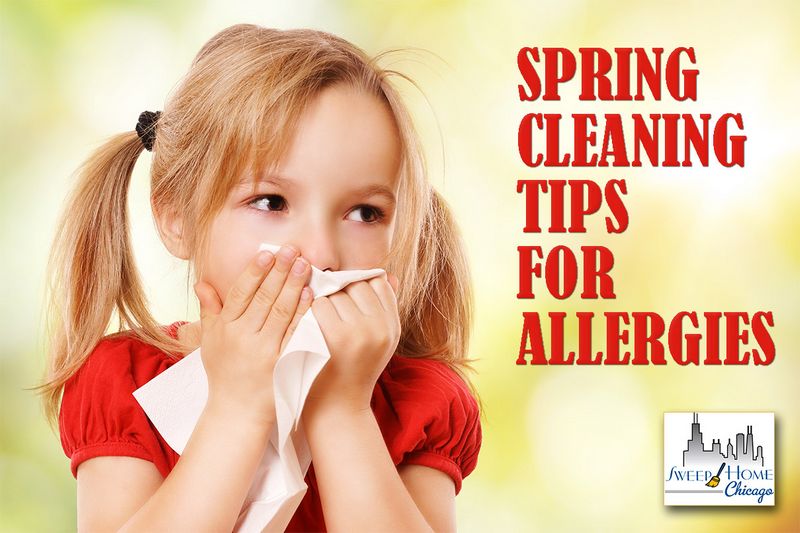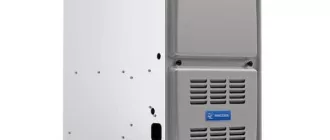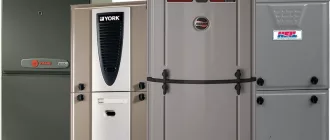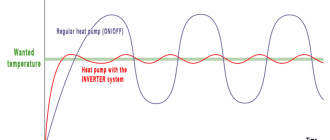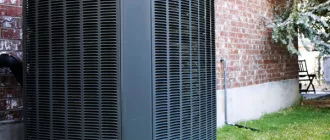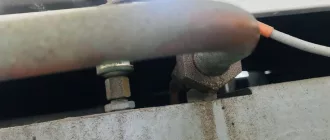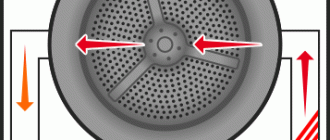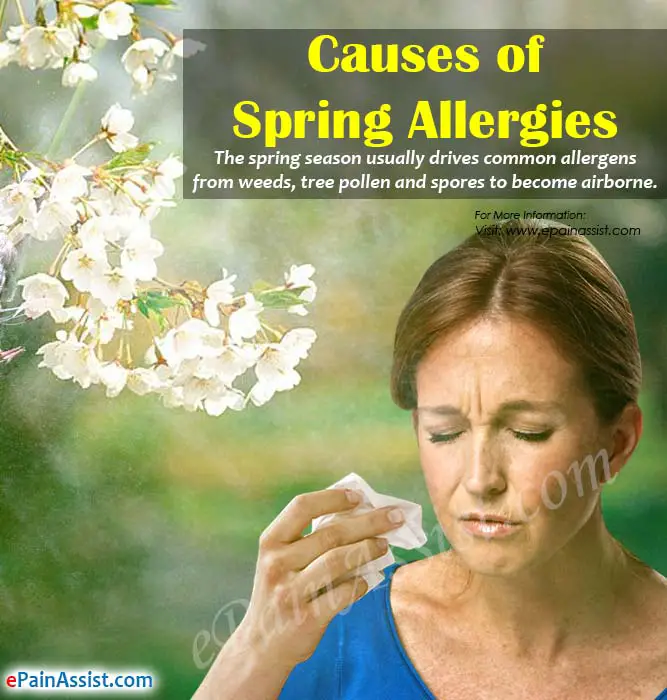
Making Your Home Comfortable during Spring Allergies
Spring is a beautiful season when nature comes alive and fills the air with the fragrance of flowers. However, for many people, it also brings discomfort and allergies. Making your home allergy-free this spring is essential to ensure a comfortable and healthy living environment.
One of the key steps in making your home allergy-free is to keep it clean. Regular dusting and vacuuming can help remove allergens such as pollen, dust mites, and pet dander from your furniture and floors. Additionally, washing your bedding and curtains in hot water can help eliminate dust mites and other allergens.
Creating a barrier against allergens is another important aspect. Using allergen-proof covers for your mattresses, pillows, and carpets can prevent dust mites from settling in and triggering allergies. It is also recommended to keep windows and doors closed during high pollen count days to minimize the entry of allergens into your home.
Improving indoor air quality is crucial in allergy-proofing your home. Using air purifiers with HEPA filters can effectively trap airborne allergens and provide clean and fresh air. Additionally, regular maintenance of your HVAC system and changing air filters will help prevent the circulation of allergens throughout your home.
By taking these steps and implementing other allergy-reducing measures, you can create a comfortable and allergy-free home environment this spring. Don’t let allergies ruin the beauty of the season and enjoy it to the fullest in the comfort of your own home.
Spring Cleaning Tips for Allergy-Free Home
Spring is a wonderful time of year, but it can also bring an increase in allergies for many people. If you suffer from allergies, making your home comfortable and allergen-free is essential for a pleasant spring season. Here are some spring cleaning tips to help you create an allergy-free home:
- Clean and vacuum regularly: Dust and allergens can accumulate quickly, so it’s important to clean your home regularly. Use a damp cloth to dust surfaces, and vacuum carpets and upholstery to remove allergens.
- Wash bedding frequently: Bedding can harbor dust mites and pollen, so make sure to wash your sheets, pillowcases, and blankets regularly in hot water to kill allergens.
- Remove clutter: Clutter can trap dust and make it harder to clean your home effectively. Clearing clutter can make your home easier to clean and reduce the presence of allergens.
- Replace air filters: Dirty air filters can circulate allergens throughout your home. Check your air filters regularly and replace them as needed to maintain clean air quality.
- Use allergen-proof covers: Mattresses, pillows, and furniture can harbor allergens. Use allergen-proof covers to protect these items and prevent allergens from settling in.
- Avoid scented products: Many scented cleaning products and air fresheners can trigger allergies. Opt for fragrance-free products instead to minimize exposure to allergens.
- Keep windows and doors closed: Pollen and other allergens can enter your home through open windows and doors. Keep them closed, especially on windy days, to reduce allergen exposure.
- Wash curtains and blinds: Curtains and blinds can collect dust and allergens. Wash or vacuum them regularly to keep allergens at bay.
- Consider air purifiers: Air purifiers can help filter out allergens and improve air quality in your home. Look for models with HEPA filters for the best results.
By following these spring cleaning tips, you can create a comfortable and allergy-free home that will allow you to fully enjoy the beauty of the season.
Remove Dust and Allergens from Your Home
Taking steps to remove dust and allergens from your home is essential for making it a comfortable space, especially during allergy season. Here are some tips to help you keep your home clean and allergy-free:
1. Dust surfaces regularly: Dust accumulates quickly, and it can contain allergens such as pollen, pet dander, and dust mites. Be sure to dust surfaces in your home regularly, using a damp cloth or microfiber cloth to trap dust particles.
2. Vacuum floors and carpets: Vacuuming not only removes visible dirt and dust but also helps to eliminate hidden allergens. Use a vacuum cleaner with a HEPA filter to ensure that allergens are properly trapped and not released back into the air.
3. Wash bedding frequently: Bedding is a common hiding place for allergens, so it’s important to wash your sheets, pillowcases, and blankets regularly. Use hot water to kill dust mites and allergens effectively.
4. Keep pets clean: If you have pets, they can contribute to allergens in your home. Bathe your pets regularly and groom them to decrease the amount of allergens they carry. It’s also important to wash their bedding and vacuum any areas they frequently spend time in.
5. Maintain proper humidity levels: Dust mites thrive in humid environments, so it’s important to maintain a humidity level between 30% and 50% in your home. Use a dehumidifier or an air conditioner to control moisture levels and reduce the growth of allergens.
6. Remove clutter: Cluttered areas attract dust and make it difficult to clean properly. Regularly declutter your home, keeping surfaces clear and minimizing areas where dust can accumulate.
7. Use allergen-proof covers: Allergen-proof covers can be placed on mattresses, pillows, and furniture to prevent allergens from seeping in. These covers create a barrier between you and potential allergens, making your home a safer place.
By following these steps, you can significantly reduce the amount of dust and allergens in your home, making it a more comfortable and allergy-free environment.
Keep Windows and Doors Closed to Prevent Allergens
Allergies can be particularly bothersome during the spring season when allergens are abundant in the air. One effective way of making your home allergy-free is by keeping your windows and doors closed.
By keeping your windows and doors closed, you can significantly reduce the amount of allergens that enter your home. Pollen, dust, and other common allergens are often carried into your home through open windows and doors. By sealing off these entry points, you can create a barrier that prevents allergens from infiltrating your living space.
One way to ensure that your windows and doors are properly sealed is by inspecting them for any gaps or cracks. Fill in any gaps or cracks with weatherstripping or caulking to effectively seal off these points of entry. Additionally, consider installing window screens that can help filter out some allergens while still allowing fresh air to circulate in your home.
It’s also important to note that keeping your windows and doors closed doesn’t mean you have to sacrifice ventilation. Consider using a high-quality air purifier or running a properly maintained HVAC system to ensure that your indoor air quality remains clean and fresh.
By keeping your windows and doors closed, you can significantly reduce your exposure to allergens, making your home a safe haven during the spring season.
Use High-Quality Air Filters in Your HVAC System
To ensure a healthier and allergy-free home this spring, consider using high-quality air filters in your HVAC system. These filters are designed to capture and remove allergens such as pollen, dust mites, pet dander, and mold spores from the air, making it cleaner and safer to breathe.
When choosing air filters for your HVAC system, look for filters with a high efficiency rating, such as MERV 11 or higher. These filters can trap smaller particles and provide better filtration. Additionally, consider filters with activated carbon, which can help absorb odors and chemicals in the air.
It’s important to note that high-quality air filters may need to be replaced more frequently than lower-quality ones. Check the manufacturer’s recommendations for how often the filters should be changed and make sure to follow those guidelines. Regularly replacing air filters will ensure they continue to work effectively and provide optimal air quality in your home.
Remember, using high-quality air filters in your HVAC system is just one part of creating an allergy-free home this spring. It’s also important to keep your home clean, reduce clutter, and regularly dust and vacuum to minimize the presence of allergens. Consider using hypoallergenic bedding and pillows, and keep windows closed to prevent pollen and other outdoor allergens from entering your home.
By taking these steps, you can create a healthier living environment and reduce the impact of allergies on you and your family this spring.
Change Bedding and Wash It Regularly
Allergies can make it difficult to get a good night’s sleep, but making a few changes to your bedding can make a big difference. Dust mites and pollen particles can easily accumulate in your bedding, causing discomfort and worsening allergies. To create a more allergy-free environment, it’s important to regularly change and wash your bedding.
Start by investing in hypoallergenic bedding materials that are designed to repel allergens. Look for mattress and pillow covers that are dust mite-proof and allergen-resistant. These can create a barrier between you and any allergens that may be lurking in your bedding.
Additionally, washing your bedding regularly is crucial for keeping it free from allergens. Use hot water, as it helps to kill dust mites and remove pollen particles. Washing the bedding at least once a week is recommended to maintain a clean and allergy-free sleeping environment.
To further reduce allergens, consider using a high-efficiency particulate air (HEPA) filter in your bedroom. This can help to trap and remove airborne allergens, such as pet dander and mold spores, improving the air quality in your sleeping space.
By changing your bedding and washing it regularly, you can create a more comfortable and allergy-free environment for a restful night’s sleep. Taking these simple steps can go a long way in making your home allergy-free this spring.
Vacuum Carpets and Upholstery Frequently
In order to make your home allergy-free this spring and create a more comfortable living environment, it is essential to regularly vacuum your carpets and upholstery. These surfaces can easily trap allergens such as dust mites, pollen, pet dander, and mold spores, which can trigger allergies and cause discomfort.
To effectively remove these allergens, use a vacuum cleaner with a HEPA (High-Efficiency Particulate Air) filter. This type of filter can capture even the tiniest particles, preventing them from being recirculated back into the air. Make sure to vacuum not only the visible surfaces but also the hard-to-reach areas, such as corners, edges, and underneath furniture.
Additionally, consider using a vacuum cleaner with a rotating brush or beater bar. These features help to agitate and loosen dirt, dust, and allergens embedded in the fibers, making them easier to remove. Don’t forget to empty the vacuum bag or canister regularly to prevent the allergens from being released back into your home.
While vacuuming carpets and upholstery, pay attention to any signs of wear or damage. Replace worn-out carpets or rugs and repair any tears or holes in upholstery to prevent further accumulation of allergens.
By vacuuming your carpets and upholstery frequently, you can reduce the presence of allergens in your home and help make your spring season more comfortable for everyone.
Reduce Indoor Humidity to Control Allergens
When it comes to making your home comfortable this spring, one important aspect to consider is reducing indoor humidity. High levels of humidity can promote the growth of mold, dust mites, and other allergens that can trigger allergy symptoms.
To control allergens, it is crucial to maintain an optimal indoor humidity level of around 30-50%. Here are a few tips to help you reduce humidity in your home:
| Use a Dehumidifier | A dehumidifier can help remove excess moisture from the air, making your home less hospitable for allergens. Place the dehumidifier in areas with high humidity, such as the basement or bathroom. |
| Fix Leaks and Seal Cracks | Leaking pipes or cracks in your walls can contribute to increased humidity levels. Inspect your home for leaks and cracks, and make sure to fix them promptly to prevent moisture buildup. |
| Improve Ventilation | Proper ventilation can help reduce indoor humidity. Open windows and doors to allow fresh air to circulate, especially in rooms prone to high humidity like the kitchen and bathroom. Also, consider installing exhaust fans in these areas to expel humid air. |
| Avoid Hanging Wet Clothes Indoors | Hanging wet clothes indoors can release moisture into the air, increasing humidity levels. Instead, dry your clothes outside or use a dryer with proper ventilation. |
| Use Air Conditioning | Air conditioning not only cools the air but also helps reduce humidity. Set your air conditioner to a comfortable temperature and ensure it is well-maintained to prevent any issues that may contribute to higher humidity levels. |
By following these tips to reduce indoor humidity, you can create a healthier and allergy-free environment in your home this spring. Remember, proper humidity control is essential for managing allergens and keeping your home comfortable.
Use Hypoallergenic Cleaning Products
When it comes to making your home allergy-free this spring, one of the most important steps is to use hypoallergenic cleaning products. These products are specially formulated to be gentle on the skin and to minimize any potential allergic reactions. By using hypoallergenic cleaning products, you can effectively remove dust, pollen, pet dander, and other allergens from your home without causing any further irritation.
Look for cleaning products that are labeled as hypoallergenic, fragrance-free, and free from harsh chemicals. These products will typically be milder and less likely to cause allergic reactions. Additionally, consider using natural cleaning solutions such as vinegar and baking soda, which are also hypoallergenic and environmentally friendly.
When cleaning your home, make sure to wear gloves to protect your hands from any potential irritants. Pay extra attention to areas that tend to accumulate dust, such as under furniture, in corners, and on shelves. Regularly vacuum carpets and rugs using a vacuum cleaner with a HEPA filter to effectively remove allergens from your flooring.
Remember, using hypoallergenic cleaning products is an important step in creating an allergy-free home this spring. By taking this simple precaution, you can reduce the presence of allergens in your home and create a healthier living environment for yourself and your family.
Avoid Bringing Outdoor Allergens Inside
To make your home comfortable and allergy-free this spring, it is important to take steps to avoid bringing outdoor allergens inside. Pollen and other allergens can easily stick to your clothes, shoes and even your pets. Here are some tips to help minimize the presence of outdoor allergens inside your home:
1. Remove your shoes: Shoes can track in pollen and other allergens from outside. Leave your shoes near the door or in a designated area to prevent them from spreading allergens throughout your home.
2. Change your clothes: When you come in from outside, change your clothes and put them directly in the laundry. This will help remove any allergens that may have attached to your clothing.
3. Bathe or groom your pets regularly: Pets can also bring in allergens from outside. Bathe or groom your pets regularly to reduce the amount of allergens they may be carrying and shedding inside your home.
4. Keep windows and doors closed: As tempting as it may be to let in fresh air, keeping your windows and doors closed can help prevent pollen from entering your home.
5. Use an air purifier: Consider using an air purifier with a HEPA filter to help trap and remove allergens from the air inside your home.
By following these tips, you can minimize the presence of outdoor allergens in your home, making it a more comfortable and allergy-free environment this spring.
Create an Allergy-Free Zone in Your Bedroom
If you suffer from allergies, it’s important to make your home a comfortable place for you to rest and relax, especially during the spring when allergens are at their peak. One of the most important areas to focus on is your bedroom, as this is where you spend a significant amount of time and can be the most affected by allergens.
Here are some tips to create an allergy-free zone in your bedroom:
- Keep your bedroom clean and clutter-free. Dust and vacuum regularly to remove any allergens that may have settled on surfaces or your floor.
- Invest in allergen-proof bedding. This includes hypoallergenic mattress covers, pillow covers, and comforters. These will help to prevent allergens such as dust mites from coming into contact with your skin while you sleep.
- Wash your bedding frequently in hot water to kill any allergens that may be present. Consider washing your pillows and comforters as well, especially if they are not hypoallergenic.
- Remove carpeting if possible. Carpets can trap allergens such as dust, pollen, and pet dander. Opt for hardwood or laminate flooring instead, which is much easier to clean and less likely to harbor allergens.
- Avoid using harsh cleaning products in your bedroom. Opt for natural, fragrance-free alternatives that won’t trigger your allergies.
- Keep pets out of your bedroom. Even if you’re not allergic to animals, they can carry allergens from outside into your room.
- Use a high-efficiency particulate air (HEPA) filter in your bedroom to help remove allergens from the air. Make sure to clean or replace the filter regularly for optimal performance.
By following these tips, you can create a comfortable and allergy-free environment in your bedroom. This will allow you to rest easy and wake up feeling refreshed, even during allergy season.
Keep Pets Clean and Groomed to Minimize Allergens
If you have allergies, spring can be a challenging time to keep your home comfortable. One common source of allergens is pet dander, which can cause symptoms such as sneezing, coughing, and itchy eyes. Fortunately, there are steps you can take to minimize pet allergens in your home.
Regularly bathing and grooming your pets is essential to reduce allergens. This helps remove loose fur and dander, which are major sources of allergens. Use pet-friendly shampoos and conditioners that are specifically formulated to reduce allergens. Be sure to follow the instructions on the products and rinse thoroughly to avoid any skin irritation.
In addition to regular baths, brushing your pets daily can also help minimize allergens. Brushing removes loose fur before it has a chance to shed around your home. Use a brush or comb that is designed for your pet’s specific coat type, as this will help effectively remove loose fur and dander.
It’s also important to regularly clean your pet’s bedding and other items that may harbor allergens. Wash their bedding in hot water and dry it thoroughly to kill any dust mites or molds that may be present. Vacuuming your home regularly, using a vacuum cleaner with a HEPA filter, can also help remove pet dander and other allergens from your carpets and furniture.
If you have severe allergies and still find it difficult to manage pet allergens in your home, you may need to consider limiting your pet’s access to certain areas. For example, you can keep them out of the bedroom to create a pet-free zone where you can get a good night’s sleep without allergens.
By keeping your pets clean and groomed, you can minimize allergens in your home and create a more comfortable living environment this spring.
Replace Old and Dusty Curtains or Blinds
One of the most important steps in making your home comfortable and allergy-free this spring is to replace old and dusty curtains or blinds.
Over time, curtains and blinds can accumulate dust, pet dander, and other allergens, making them a breeding ground for allergens. This can lead to sneezing, coughing, and other allergy symptoms.
To create a clean and fresh environment in your home, take the time to thoroughly clean or replace your curtains or blinds. Start by removing them from the windows and giving them a good shake outdoors to remove any loose dust particles.
If your curtains or blinds are washable, follow the manufacturer’s instructions to launder them. Use hot water and an allergen-reducing detergent to kill any dust mites or allergens that may be present.
If your curtains or blinds are not washable, consider replacing them with new ones that are made of hypoallergenic materials. Look for curtains or blinds that are specifically designed to repel dust and allergens.
Additionally, consider using blinds instead of curtains, as blinds are easier to clean and less likely to collect dust. Opt for blinds that can be easily wiped down with a damp cloth or duster.
By replacing your old and dusty curtains or blinds, you can create a clean and allergy-free environment in your home, allowing you to fully enjoy the beautiful spring season.
Install Air Purifiers for Extra Allergen Control
As spring arrives, many people are excited about the warmer weather and longer days. However, for those who suffer from allergies, this time of year can be a nightmare. Dust, pollen, and other allergens can easily enter your home, making your allergies worse. To combat this problem and create a more allergy-free environment, consider installing air purifiers throughout your home.
Air purifiers work by filtering out airborne allergens such as pollen, dust mites, pet dander, and mold spores. These devices use various technologies like HEPA filters, activated carbon filters, or electrostatic precipitators to remove allergens from the air, making it cleaner and healthier to breathe.
When choosing an air purifier, make sure to consider the size of the room you want to purify. Different models have different coverage areas, so it’s important to select one that can effectively clean the air in your desired space. Additionally, pay attention to the type of filter used in the purifier. HEPA filters are considered the gold standard for allergen removal, as they can capture particles as small as 0.3 microns.
Once you have your air purifiers installed, it’s important to properly maintain them. This includes regularly changing the filters according to the manufacturer’s instructions. A dirty or clogged filter will not be able to effectively capture allergens, so it’s crucial to keep them clean and replace them as needed.
By installing air purifiers in your home, you can greatly reduce the amount of allergens in the air, providing you with relief from spring allergies. So don’t let allergies hold you back from enjoying the season – take control of your home’s air quality and make it allergy-free!
Seek Professional Help for Severe Allergies
If you suffer from severe allergies that make it difficult to enjoy your home in the spring, it may be time to seek professional help. Allergies can have a significant impact on your quality of life, and it’s important to address them properly to ensure your health and well-being.
A professional allergist or immunologist can help identify the specific allergens that are causing your symptoms and develop a personalized treatment plan. This may involve allergy testing to pinpoint the triggers and determine the most effective course of action.
There are various treatment options available for severe allergies, including medications, immunotherapy, and lifestyle modifications. A professional can recommend the best approach based on your individual needs.
Additionally, if you’re unsure of the source of your allergies or how to reduce allergens in your home, a professional can provide guidance. They can offer advice on creating an allergy-friendly environment by minimizing exposure to allergens such as dust mites, pet dander, and pollen.
Remember, seeking professional help for severe allergies is not a sign of weakness or defeat. It’s a proactive step towards improving your health and overall well-being. Don’t suffer in silence – reach out to an allergist or immunologist today and take control of your allergies for a happier, more comfortable life at home this spring.
Q&A:
What are common allergens that can negatively impact your home during the spring?
Common allergens that can negatively impact your home during the spring include pollen, mold, dust mites, and pet dander.
How can I reduce pollen inside my home during the spring?
To reduce pollen inside your home during the spring, you can keep windows closed, use air purifiers, regularly clean floors and surfaces, and remove your shoes before entering the house. Additionally, using allergen-proof bedding and washing curtains regularly can also help.
What steps can I take to prevent mold growth in my home?
To prevent mold growth in your home, you can ensure proper ventilation, fix any leaks or water damage promptly, monitor humidity levels, clean and dry surfaces regularly, and use mold-resistant products in areas prone to moisture.
How can I minimize dust mites in my home?
To minimize dust mites in your home, you can use allergen-proof covers for pillows, mattresses, and bedding, wash bedding weekly in hot water, vacuum regularly with a HEPA filter, and keep humidity levels below 50%. It’s also important to reduce clutter and avoid having carpets or heavy drapes.
What are some tips for reducing pet allergens in the home?
To reduce pet allergens in the home, you can keep pets out of bedrooms and off upholstered furniture, vacuum and dust regularly, wash pet bedding frequently, and groom your pets regularly. It may also be helpful to create a designated pet-free zone in your home.

